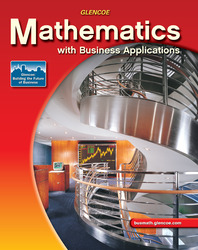
Mathematics with Business ApplicationsChapter 22:Business Math in ActionThe Heartbeat of Wall StreetBusinesspeople have been buying and selling stocks and bonds since the founding of the U.S. From the beginning, Wall Street was at the center of the action. Located at the lower end of Manhattan, the street gets its name from a 12-foot fence erected there in 1653 by Dutch settlers who wanted protection from British and Native American foes. By the 1700s, the wall had been replaced by a street lined with warehouses full of merchandise from around the world. Slaughterhouses and tanneries were located nearby. Here, businessmen gathered outdoors to buy and sell goods. While they were at it, they’d sell lottery tickets, bonds, and shares of stock in new U.S. banks. In 1792, 24 of these businessmen met in Battery Park and agreed upon a set of rules and fees for exchanging stocks. They arranged the use of a building at which the stocks would be auctioned to the highest bidder every day. The group would collect a commission on each sale. They dubbed their organization the Stock Exchange Office. In 1863 it decided on its current name, the New York Stock Exchange (NYSE), and moved into its permanent home at the corner of Wall and Broad Streets. The trading floor-where frantic stockbrokers shout and wave, clutching little pieces of paper-is still very much a part of the NYSE. An enormous arena-like room houses hundreds of stations where the stocks are traded. In other cities, such as San Francisco, trading floors have been shut down because most stocks are now traded online. But at the NYSE face-to-face trading is alive and well, although each station is equipped with a computer. There are about 2,800 companies listed at the NYSE. At 9:30 each weekday morning, a bell rings and the buying and selling begins. Stockbrokers from brokerage houses such as Charles Schwab and Morgan Stanley sprint from station to station, trying to gauge the latest shift in the market. Most of the trading that occurs on the floor is done on behalf of major clients making big trades. The auctions are run by “specialty brokers” from the various companies. Electronic display boards mounted around the perimeter of the giant room steadily transmit the price of all stocks, which can change by the second. Since the 1990s there has been speculation about how long the NYSE trading floor can last in an era of high-speed electronic information, where anyone can trade stocks from his or her home computer and most stock exchanges are exclusively electronic. In April 2005, the NYSE acquired the electronic trading company Archipelago Holdings Inc., which may signal the eventual phasing out of the trading floor. The result may be faster trades, but the raw excitement of the floor can’t be duplicated in an office full of computer monitors. |  |















